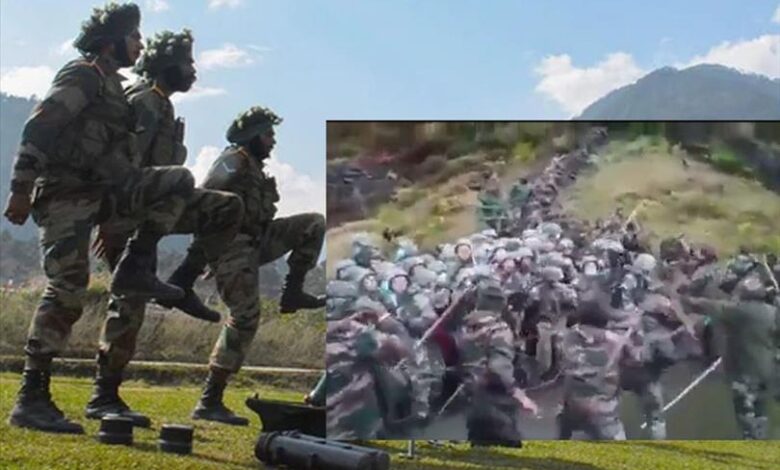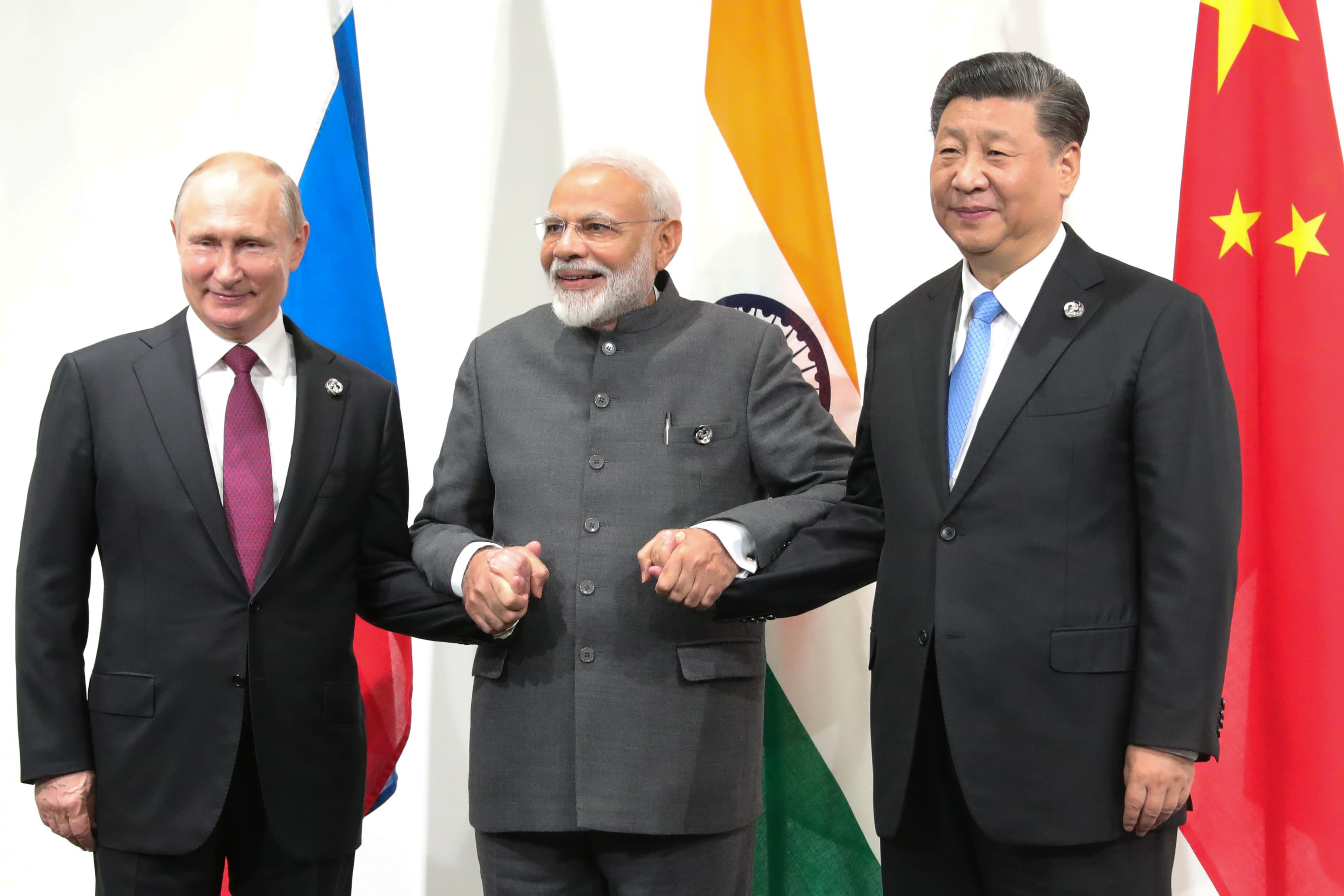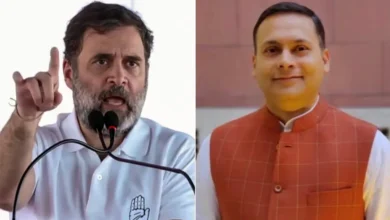Indo-China Clash: Will Modi Plan A Surgical Strike On China, Or Only Block A Few More Chinese Apps In Revenge?
Relations between India and China have been worsening. Despite the diplomatic talks between the two countries when the last border skirmish broke out, the two world powers had a face-off against each other, this time in the Tawang sector of Arunachal Pradesh, the eastern tip of India.

On December 9, China, with its long-standing history of provoking India and indulging in “land grabbing”, displayed its intentions yet again when Chinese troops tried to push back Indian soldiers in one of the manned posts in the Tawang sector of Arunachal Pradesh.
What is commendable is that, according to media reports, few army soldiers managed to thwart the attack. However, the Army quickly sent backup and defended the border post area against roughly 300 Chinese soldiers.

While both countries have been experiencing a long history of conflict along the lengthy border, tensions again soared this week as China continued with its provocation, and troops from both countries suffered injuries during a face-off between 300 odd Chinese troops and 100 odd Indian troops who managed to push them back into their region.
Before we get on with what the Indian government wants and needs to do about the Chinese incursions into Indian borders, we will touch upon the timeline of the long historical border tensions that has prevailed all these years.
- The Indo – China conflict has a long history dating back to 1914 when negotiating a treaty to effectively settle the borders between China and British India was attempted by the representatives from Britain and the Republic of China and Tibet.
- After India declared its Independence from Britain in 1947 and formed the People’s Republic of China in 1949 – a war broke out between the two countries in 1962.
- Chinese troops, in 2017, attempted to construct a road in the Doklam Plateau, and Indian soldiers confronted the Chinese to stop the construction. Months later, with troops on both sides, China stopped the construction on the road and troops from both countries withdrew.
- In June 2020, the Chinese attempted an incursion into the Galwan Valley of Ladakh after a skirmish broke out between the soldiers of both countries. In September 2022, both countries agreed to disengage from the disputed area.

Narendra Modi Government – A Quiet Affair
The Narendra Modi government seems to be its worst enemy when handling border disputes with China.
In the earlier border dispute in 2020 with China, the Narendra Modi government made the biggest mistake by allowing the border dispute with China to become a matter of ‘Chinese sovereignty’.
Consequently, India appeared to be the aggressor, and worse, it handed over the Ladakh narrative on a platter to China; thus, it appeared that the fault lay with the Indian soldiers negating the tremendous duty and sacrifice that the Indian troops made.
India Not So Tough
What is even worse is that India’s stand as a tough guy was severely broken to bits when a shocking admission by the minister of state for road transport and highways and former army chief General V.K. Singh, who was assigned to talk on the matter.
While speaking to the media, he had said, “…none of you come to know how many times we have transgressed as per our perception. We don’t announce it. Chinese media does not cover it… Let me assure you, if China has transgressed 10 times, we must have done it at least 50 times, as per our perception.”
This is what is mindblowing and a big blow to the armed force’s morale and sense of duty, indeed, since the Indian stance has always been that it never transgresses.
And what this statement ended up doing is that it gave the buck to China as it reinforced the Chinese claim that the actual Line of Actual Control (LAC) was it’s unilateral 1959 one. Hence, by adhering to the 1993 LAC, the Indian Army was guilty of transgressing Chinese sovereignty.
This, by far, is the biggest mistake that any government and a seasoned politician can make, and Narendra Modi did make this mistake – he entirely led the Indian Armed Forces down!
And maybe V.K Singh cannot be entirely blamed here even though he once commanded the Army, he should have known and understood how his entire statement would be the worst blow, but this is what politics does to one.
Throughout January 2021, the Modi government was unnerved by the continuous coverage of the same in the media, and the commercial satellite imagery disclosed yet another fact.

These reports revealed massive PLA war preparedness in Tibet opposite Arunachal Pradesh, and with the two-front war staring it in the face, the Modi government obviously panicked.
Now let’s dwell on the military thinking, which would have been communicated to the government, that while the military could fight a two-front war – fighting a primary front while holding the second one – China would not have in all consideration been the primary front – why?
Because Pakistan would have most certainly opened the second front.
Since assuming power in November 2012, China’s President Xi Jinping has repeatedly said that not an inch of its territory would be given up.
And to substantiate the Chinese argument further, nothing stops China from voicing the idea of reunification of the state of Arunachal Pradesh, which it calls South Tibet, with the mainland.
China Wins The Hand
Even as the Indian government was walking on eggshells, Wang Yi decided to put the Chinese perspective on the Ladakh face-off in the public domain, as well as the future of the bilateral relationship.
The Chinese readout of the telephonic conversation between Jaishankar and Wang Yi (at Jaishankar’s initiative) claimed that India was responsible for aggression in Ladakh and had strayed from the path of friendly ties and needed to come back on track.
This was an unambiguous reference to the Wuhan understanding between Prime Minister Narendra Modi and Xi at the first informal summit in 2018, where both sides had committed to cooperate and not be rivals.
As politics goes, no consideration was made to the PLA’s massive build-up and the threat to Arunachal Pradesh dangling over India. To ensure that the Modi government did not meander off the path again, it was decided to have a hotline between the two foreign ministers.
Interestingly, for a decade, India had unsuccessfully asked China to have a hotline between the two armies for quick resolution of border face-offs.

Wuhan Understanding
Under the Wuhan understanding, there is much that China needs India to deliver:
- Normalize bilateral trade to pre-Ladakh levels;
- Not be a party to the militarization of the Quadrilateral Dialogue mechanism (between the US, Japan, Australia and India) and the US-led Indo-Pacific strategy to contain China;
- Not use its soft power (comprising continuity and traditional ties) to influence (against China) smaller nations in South Asia which have already signed up for the Belt and Road Initiative;
- And to work with China under the agreed China-India-Plus one (smaller nation) model for regional prosperity.
China Pakistan “Bhai Bhai”
China has strained its relations with Pakistan after the much-talked-about Road Initiative it undertook in Pakistan and the killing of Chinese nationals in Pakistan.
But this much is true; should a war happen in the future, the PLA and Pakistan military would be in it together with defined missions.
The reality is that a one-front reinforced war threat has replaced the Indian military’s two-front war threat.
In a double-tasking role, the PLA would fight in the eastern and central sectors (Sikkim and Arunachal Pradesh) and support the Pakistan military with its excellent non-kinetic and kinetic capabilities in the western sector of Ladakh.
Hence, China achieved its objectives in Ladakh. Not only does it now occupy territory up to its 1959 claim line without fighting, but it also got the Indian government to admit that India had repeatedly violated Chinese sovereignty by clinging to the 1993 line, which did not exist in the Chinese narrative.
The Future Wars
The PLA has at least eight ‘systems destruction’ and algorithm warfighting strengths, two of which are its capability to fight significantly in the virtual domains of war and its flexible and intelligent software systems connectivity.
The PLA considers cyberspace and electromagnetic space as one continuum and understands that without supremacy, if not dominance, in these virtual spaces, a conventional war would be decisively lost before it is joined.
Cyber, electronic, and space war domains reside in this virtual space with the capability to blind, disable, disorient, and destroy communications at all levels of war.
In the 1962 war, Indian soldiers fought bravely but were let down by their command, which took to heel. The Indian military, focused on physical war domains, has failed to understand the operational importance of virtual warfighting.
According to General Naravane, Multi-Domain Operations are the future of war for which the Army is preparing. Globally, however, this decade-old warfighting strategy has been replaced by Joint Multi-Domain Operations, and there is a vast difference between the two.

An analogy would help understand the importance of software systems, to which the Indian Army has paid sparse attention but is gearing up now.
For example, the value of a smartphone is not its hardware but the software system which supports applications. This is why notifications are regularly given to users to update software operating systems on their smartphones.
Today, with 4G networks, smartphones provide cloud facilities. With 5G wireless telecommunications, smartphones can transform into a virtual internet in hand. All this is true in algorithm war, where the PLA is a global leader.
In General Naravane’s view, tanks, ships, and aircraft, the fighting icons of the 20th century, would be rendered less significant in war. However, this might be only partially correct.
They would remain significant as unmanned and intelligent (autonomous) weapon platforms.
Inspired by the swarm drone warfare seen in the Armenia-Azerbaijan war, the army chief said these would be the game-changers in a future fight.
Even though no catch-up is possible with China, India can at least start preparing for the right war by understanding future wars correctly.
Political Upheaval
While we can understand that it is routine for a party in the opposition and other political parties and their representatives to ask questions of a present government.
Here, we are not going to dwell on these points but rather look into the present government’s stand on increasing border disputes between India and China and what steps the government has taken or needs to take.
Over the last two years, India and China have hardened their stance on LAC with increased military activities on both sides of the boundary, deployment of modern weapons, infrastructure development, and a series of combat manoeuvres by their armies. The standoff between the militaries of both countries, which has cast a shadow over the Sino-India bilateral relationship, entered its third year in May 2022.
A full resolution is still not in sight, even though the two sides partially successfully disengaged rival soldiers from some friction areas.
It does seem that India’s stance towards China has become reactive rather than proactive.
And the present government indeed did not disclose many facts about Ladakh, so why should China pay any heed?
Conclusion: Having got its way in Ladakh by forcing India to accept the 1959 LAC – something China had not managed to do in 60 years – Beijing will not ease its pressure on India.
China will most likely continue military coercion along the borders with India, even as it simultaneously pressures India to normalize ties.
Hence, will Narendra Modi’s government satisfy itself and the nation by banning more Chinese Apps?




